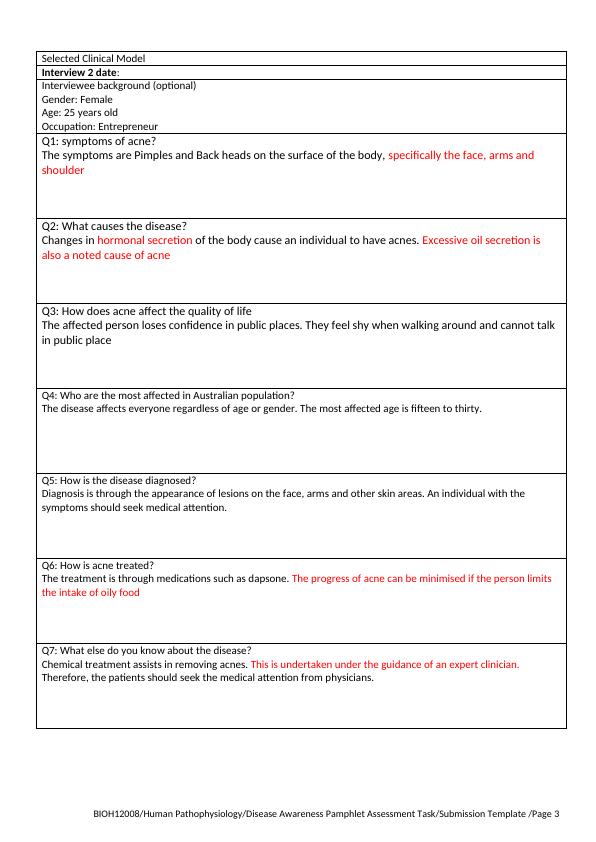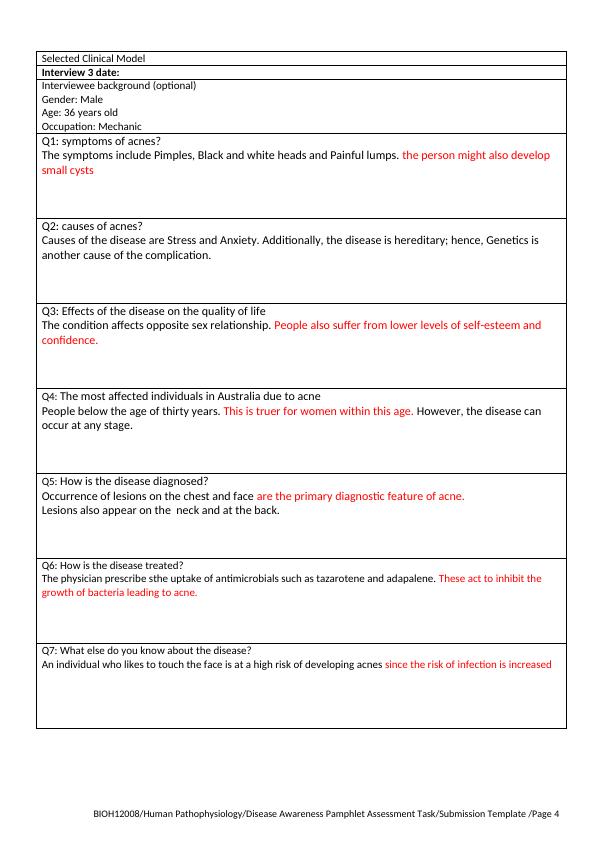Interview Summary for Clinical Model and Draft Pamphlet on Acne
Design and submit a Disease Awareness Pamphlet based on interviews conducted with members of the public and research using supplementary textbooks. Also, submit a written summary of the interviews and rationale for the pamphlet design.
19 Pages5205 Words313 Views
Added on 2023-06-09
About This Document
Acne is a chronic skin condition that leads to the development of inflammatory lesions on the surface. The disease is predominant in individuals below the age of thirty, and the most affected gender is women. The condition might have a negative impact on the social relationships of the individual. The diagnosis is through observation of the skin. There are a variety of medications that cure or clear acne from the skin. The interviewees found the pamphlet language simple and easy to understand, but suggested adding more information on the causes, symptoms, and treatment options.
Interview Summary for Clinical Model and Draft Pamphlet on Acne
Design and submit a Disease Awareness Pamphlet based on interviews conducted with members of the public and research using supplementary textbooks. Also, submit a written summary of the interviews and rationale for the pamphlet design.
Added on 2023-06-09
ShareRelated Documents
End of preview
Want to access all the pages? Upload your documents or become a member.
Interview and Rationale Summary for Rheumatoid Arthritis
|15
|4482
|244
Disease Awareness Pamphlet Assessment Task | Otitis Media
|12
|2762
|19




